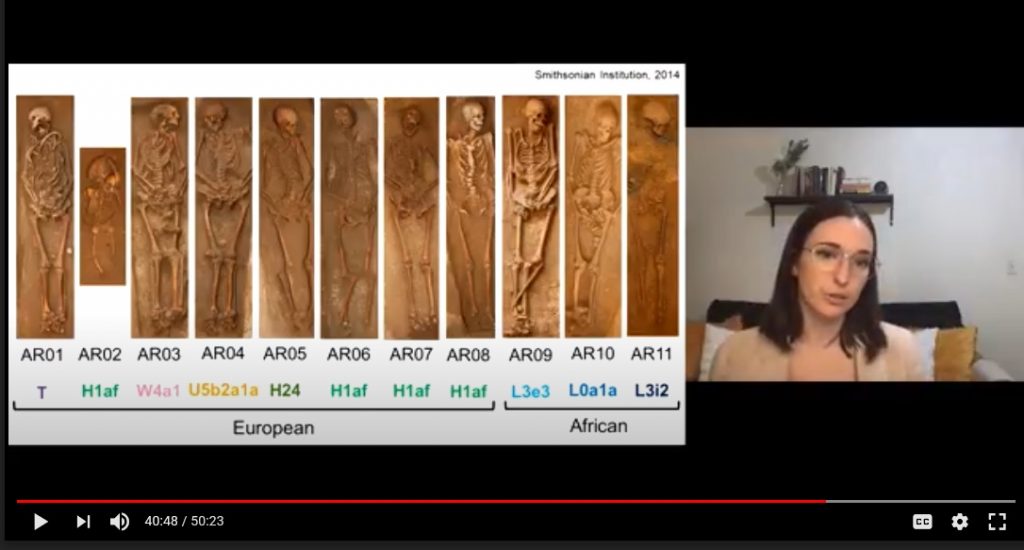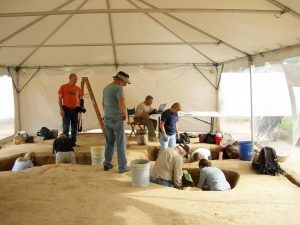(DOVER, Del. — Sept. 28, 2020) — On Sept. 28, 2020, the Delaware Division of Historical and Cultural Affairs released “Results of the Avery’s Rest Bioarchaeological Investigations,” a video presentation by Raquel Fleskes, a doctoral candidate in biological anthropology at the University of Pennsylvania. Fleskes is lead author of the research paper “Ancient DNA and bioarchaeological perspectives on European and African diversity and relationships on the colonial Delaware frontier” which was published in the October 2019 edition of the American Journal of Physical Anthropology. Go to the following link to watch the video.

The Avery’s Rest archaeological site is located near the shore of Rehoboth Bay in Sussex County, Del. Beginning in 2006, the site was investigated by a team led by Dan Griffith of the Archaeological Society of Delaware in collaboration with the division. Archival research revealed that the first documented occupation of the site was by John and Sarah Avery and their children in A.D. 1674.


In 2012, evidence of human burials at the site led to the discovery of 11 well-preserved sets of human remains which were later determined to have been interred between the late 1600s and early 1700s. Under the provisions of the State’s Unmarked Human Remains Law, three known descendants of John Avery were identified. With their consent, the State engaged Dr. Douglas Owsley of the Smithsonian Institution to conduct osteological and mitochondrial DNA analyses of the remains.
Subsequently, Owsley asked Fleskes to conduct DNA sequencing on samples from each of the 11 sets of remains. Fleskes conducted the sequencing at the University of Tennessee-Knoxville’s Molecular Anthropology Laboratories under the supervision of Dr. Graciela Cabana. The results of both the osteological and DNA research revealed that eight of the individuals were of European descent while three were of African descent — the earliest known discovery of remains of enslaved people in Delaware.
DNA sequencing further suggested a number of intriguing insights, most notably that several of the European‐descended individuals were maternally related while the individuals of African descent, genetically linked to present‐day western, central and eastern regions of Africa, were not.
Committed to learning as much as it can about the lives of the people who lived at Avery’s Rest and sharing that knowledge with the community, the Division of Historical and Cultural Affairs contracted with Richard Grubb and Associates to conduct further historical research as well as commissioning Fleskes’ video presentation.
In her introduction to the video, Fleskes noted that the goal of the Avery’s Rest research was to illuminate the ancestry and relationships of early settlers living on the Delaware frontier in the 17th century. This research is important in understanding the early colonial history of European and African persons in Delaware.
A native of Gaithersburg, Md., Raquel Fleskes holds a bachelor’s degree in anthropology from the University of Maryland and will complete her doctoral studies in biological anthropology from the University of Pennsylvania in 2021. Her research explores how DNA can be used to understand human migration and settlement patterns through time. She is particularly interested in population movements during the historic period (1500s–1800s), and how genetics can be used in tandem with historical and cultural information to create a more nuanced perspective of the past.